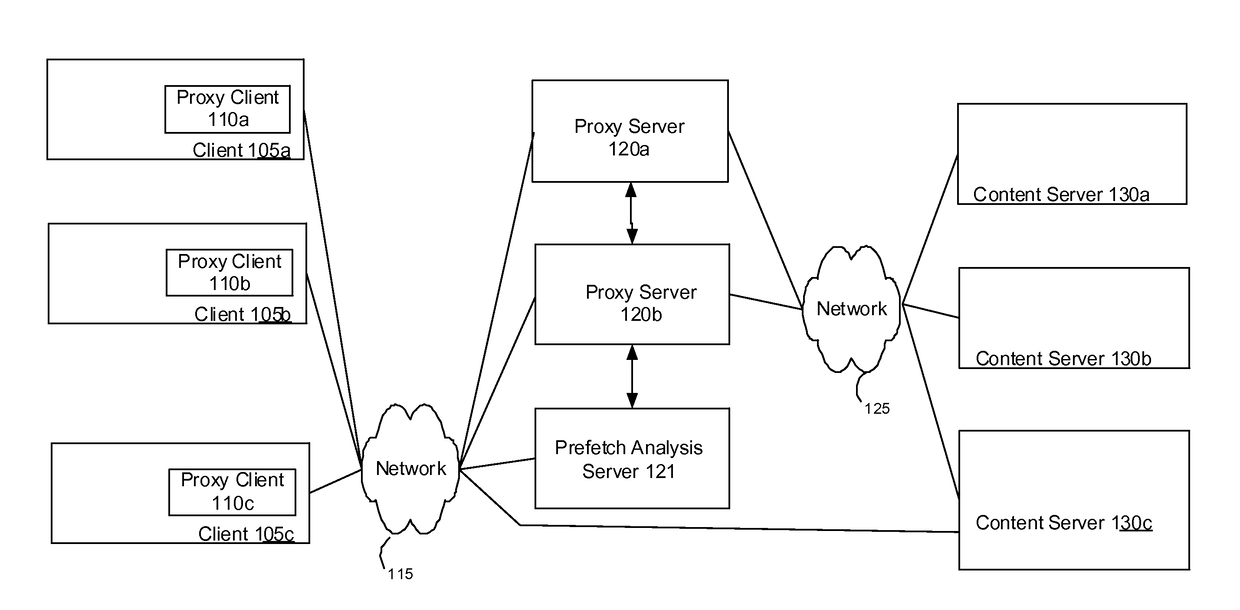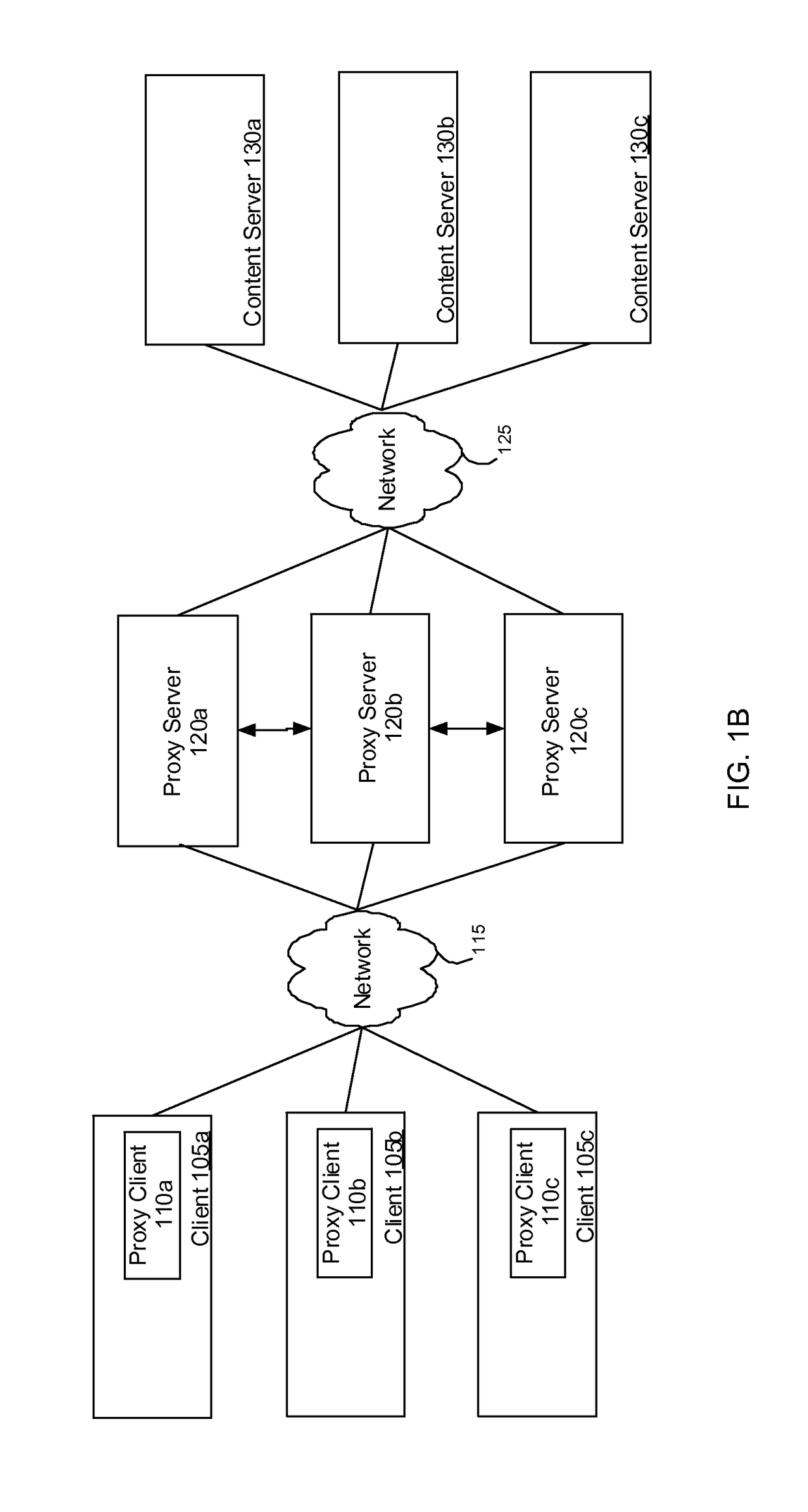Progressive prefetching
a technology of prefetching and progress, applied in the field of progressive prefetching, can solve the problems of reducing the total time required to satisfy the entire series of requests for the client, wasting resources to prefetch an object that will never be used, and it is difficult to determine which objects are associated with a web pag
- Summary
- Abstract
- Description
- Claims
- Application Information
AI Technical Summary
Benefits of technology
Problems solved by technology
Method used
Image
Examples
Embodiment Construction
[0079]The present invention relates, in general, to network acceleration and, more particularly, to enhancing web page transaction and web page load operations in response to a user action with dynamic tracking of web page transactions.
[0080]In one potential implementation, a user of a client side computer clicks on a web page link. The client side computer or a web browser operating on a client side computer may then send a first root HTTP request to a content server via a proxy server in response to the click. The content server then sends a first root HTTP response back to the client side computer via the proxy server. The first root HTTP response may include embedded URLs that are then requested as part of child HTTP requests from the client to the content server via the proxy server. Child HTTP responses may include further embedded URLs, thus creating a chain or waterfall of objects that make up a web page. Certain embodiments detailed below may function to identify the relati...
PUM
 Login to View More
Login to View More Abstract
Description
Claims
Application Information
 Login to View More
Login to View More - R&D
- Intellectual Property
- Life Sciences
- Materials
- Tech Scout
- Unparalleled Data Quality
- Higher Quality Content
- 60% Fewer Hallucinations
Browse by: Latest US Patents, China's latest patents, Technical Efficacy Thesaurus, Application Domain, Technology Topic, Popular Technical Reports.
© 2025 PatSnap. All rights reserved.Legal|Privacy policy|Modern Slavery Act Transparency Statement|Sitemap|About US| Contact US: help@patsnap.com



